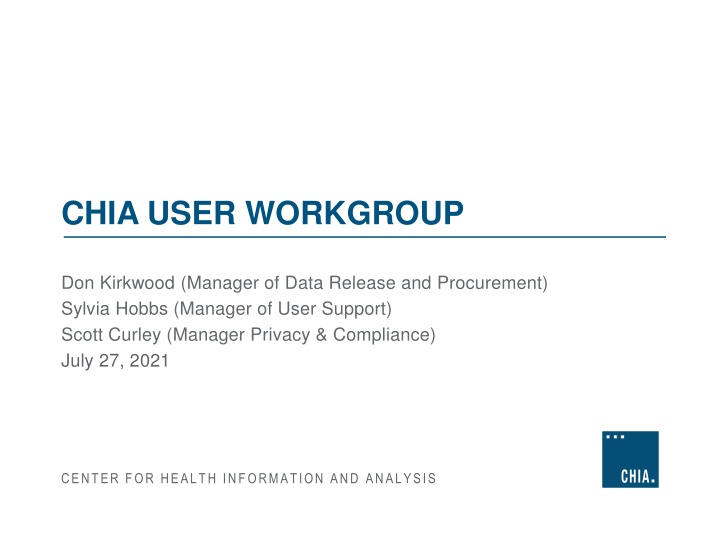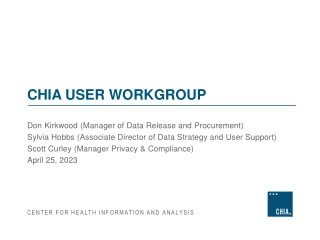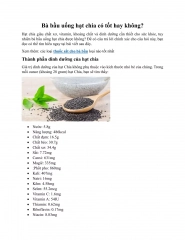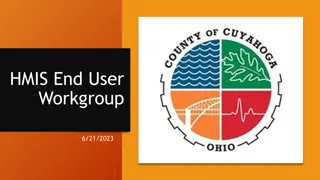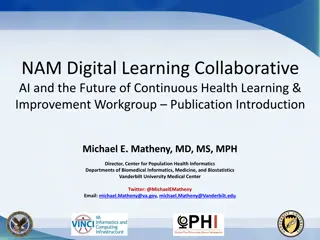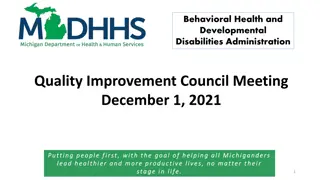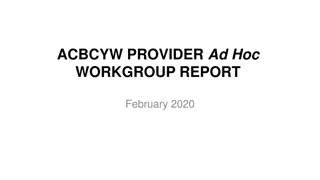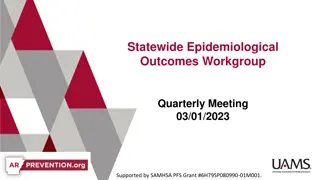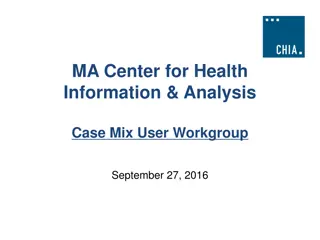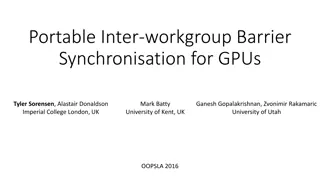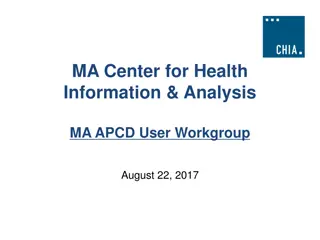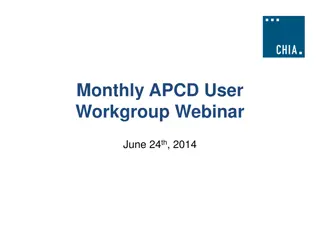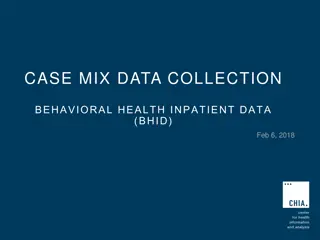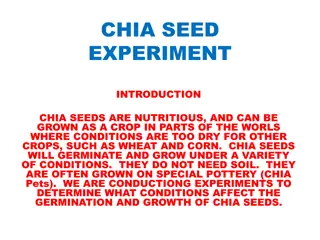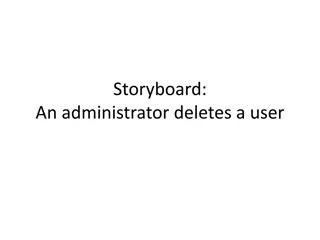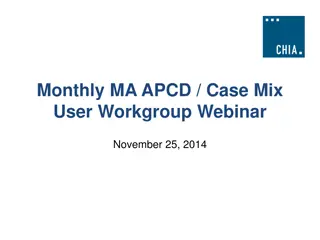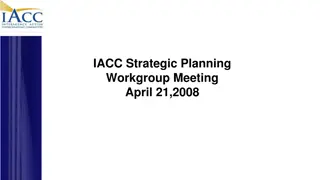CHIA USER WORKGROUP
This update includes information on the CHIA User Workgroup meeting agenda, MA APCD Release 9.0/10.0 availability, FY20 Case Mix Release, and data release/application updates due to COVID-19 restrictions. Details on new data releases, application procedures, and remote workforce arrangements are provided.
Download Presentation

Please find below an Image/Link to download the presentation.
The content on the website is provided AS IS for your information and personal use only. It may not be sold, licensed, or shared on other websites without obtaining consent from the author.If you encounter any issues during the download, it is possible that the publisher has removed the file from their server.
You are allowed to download the files provided on this website for personal or commercial use, subject to the condition that they are used lawfully. All files are the property of their respective owners.
The content on the website is provided AS IS for your information and personal use only. It may not be sold, licensed, or shared on other websites without obtaining consent from the author.
E N D
Presentation Transcript
CHIA USER WORKGROUP Don Kirkwood (Manager of Data Release and Procurement) Sylvia Hobbs (Manager of User Support) Scott Curley (Manager Privacy & Compliance) July 27, 2021 CENTER FOR HEALTH INFORMATION AND ANALYSIS
Agenda Announcements: APCD Release 9.0/10.0 Updates FY20 Case Mix Release Projections Data Release and Application Update Website Updates Application Reminders User Support Questions Longitudinal availability of race/ethnicity data Unknowns in race/ethnicity data Source of admission codes compared to ED flags ED flags compared to revenue codes Q&A 2 User Workgroup | CHIA User Support
MA APCD Release 9.0/10.0 Available Late Fall / Early Winter Applicants with approved projects that require updated APCD data (Release 9.0/10.0) should submit to CHIA a completed Exhibit B (Certificate of Continued Need and Compliance) of the Data Use Agreement. After submitting a completed Exhibit B you will receive an invoice (if applicable) for the requested data. Upon payment of the invoice the order for the data will be placed. Release 9.0/10.0 includes data on services from January 2015 December 2020 with six months of claim runout. 3 User Workgroup | CHIA User Support
Case Mix FY20 Release *CURRENT* RELEASE TIMEFRAMES FOR EACH FILE: Inpatient (HIDD) Available for request Emergency Department (ED) Available for request Outpatient Observation (OOD) Applicants with approved projects that require newly available year(s) of Case Mix Data (e.g., FY 19) should submit to CHIA a completed Exhibit B (Certificate of Continued Need and Compliance) of the Data Use Agreement. After submitting a completed Exhibit B you will receive an invoice (if applicable) for the requested data. Upon payment of the invoice the order for the data will be placed. Mid-Fall 2021 4 User Workgroup| CHIA User Support
Data Release and Application Updates Due to Governor Baker s emergency actions to limit the spread of COVID-19 CHIA s workforce will be remote, for now. This arrangement will limit CHIA s ability to produce and deliver data extracts. At this time, CHIA is releasing data and providing extracts to requestors. During this time, CHIA will continue to accept and review data applications for both Case Mix and All-Payer Claims Database (MA APCD) datasets. Review committees, DRC and DPC, will continue their meetings remotely as necessary. Due to CHIA s physical office being closed, applications will be accepted without a fee. After receipt of the application, CHIA will issue an invoice which will allow applicants to remit payment online. If you are a Data User that has a CHIA hard drive in your possession, please keep the hard drive at this time while CHIA s physical office is closed. 5 User Workgroup| CHIA User Support
Website Release Updates Updates on the production of APCD and Case Mix databases and status of data requests are now posted to CHIA s website! Aim #1 is to provide weekly or bi-weekly status update on CHIA data products as they are in development. Aim #2 is to provide applicants with information about expected fulfillment status for individual data requests. Request IDs will be communicated to Data Requestors via email. Please visit http://www.chiamass.gov/status-of-data-requests/ to see the current status of releases. User Workgroup| CHIA User Support 6
Fee Waiver Request Reminders 1. If you re submitting a request for a fee waiver, remember to include the fee remittance form in your application package on IRBNet. Remember to submit supporting documentation (if required). If you re requesting a financial hardship waiver, remember to submit information detailing your project s financial situation (examples: project budget, grant funding, organizational / departmental funding). Also request to pay a specific price that you reasonably believe you re able to afford to contribute. CHIA generally does not offer full financial hardship fee waivers. We expect all applicants to have made an attempt to find funding to cover the full cost of the data fees. Fee waiver requests can take some time to process especially financial hardship requests. 2. 3. 4. 5. 8 User Workgroup | CHIA User Support
Pediatric Question Question: The MA APCD pharmacy claims has a diagnosis code field. If I wanted to : The MA APCD pharmacy claims has a diagnosis code field. If I wanted to determine pediatric asthma rates and the types of medications asthmatics take, determine pediatric asthma rates and the types of medications asthmatics take, would the pharmacy claims diagnosis code field suffice to determine asthma would the pharmacy claims diagnosis code field suffice to determine asthma diagnosis, or would I have to apply for the both the medical claims data and diagnosis, or would I have to apply for the both the medical claims data and pharmacy claims data to obtain asthma diagnosis from medical claims? pharmacy claims data to obtain asthma diagnosis from medical claims? Answer: The diagnosis code field in the pharmacy claims data has a 1% filing threshold. Of the 869,524,971 pharmacy claim lines in MA APCD Release 8.0, only 0.7% (n=5,804,916) have data in the pharmacy claim s diagnosis code field. If you query the pharmacy claims pediatric population (age < 18 years) by ICD-10-CM diagnosis code for asthma ( J45% ), the results would have less than 2,000 patients per year. However, if you query the medical claims for Massachusetts pediatric patients with an asthma diagnosis, there are consistently over 110,000 distinct patients per year (see Figure 1 below). If you link those asthma patients in the medical claims table to the pharmacy claims to determine use of albuterol sulfate inhaler (national drug code 59310057922), 66% of pediatric asthma patients have a prescription for albuterol (see Figure 2 below). Your best option would be to link the medical claims to the pharmacy claims. Always keep in mind that rates will be lower using the MA APCD due to reduction in the submission of self-insured data. Fig. 1 Massachusetts Pediatric (Age < 18) distinct Asthma Patients by Gender and Year of Service in Medical Claims Fig. 2 Medical Claims Pediatric Asthma Patients with Pharmacy Claims for Albuterol Sulfate 70,000 50,000 65,000 45,000 64,970 44,911 64,743 44,486 63,938 60,000 40,000 55,000 35,000 37,222 34,733 34,503 50,000 30,000 49,478 29,150 49,070 48,612 45,000 25,000 40,000 20,000 35,000 15,000 30,000 10,000 2016 2017 2018 2016 2017 2018 F M F M
Bun Bundled Payment Question Question: I am interested in applying for the MA APCD to study : I am interested in applying for the MA APCD to study alternative payments models. Both the medical claims and the alternative payments models. Both the medical claims and the pharmacy claims have a field for payment arrangement type where pharmacy claims have a field for payment arrangement type where the carrier reports the value that defines the contracted payment the carrier reports the value that defines the contracted payment methodology for this claim line. One of the coding options is methodology for this claim line. One of the coding options is bundled payment. Has the bundled payment coding option been bundled payment. Has the bundled payment coding option been used by the carriers on any of the claim lines? used by the carriers on any of the claim lines? Answer: The payment arrangement type field in the medical claims data and pharmacy claims data contains 10 coding options (see Table 1 below). To date, the bundled payment coding option has not been used on any claim lines in the MA APCD. In the pharmacy claims for MA APCD Release 8.0, 3 of the 10 available payment arrangement coding options are used (see Table 2). In the medical, 9 of the 10 available coding options are used (see Table 3). Table 2. Payment Arrangement Type Codes in Pharmacy Claims Percent of Claim Lines 0.08% 50.98% 48.94% Percent of Charges Value 01 02 07 Description Capitation Fee for Service Other 0.03% 43.24% 56.72% Table 3. Payment Arrangement Type Codes in Medical Claims Percent of Claim Lines 4.26% 58.66% 1.64% 18.63% 0.07% 0.75% 5.88% Percent of Charges 1.55% 63.54% 3.18% 20.21% 0.07% 0.70% 3.58% Value 01 02 03 04 05 06 07 Descritpion Capitation Fee for Service Percent of Charges DRG Pay for Performance Global Payment Other Payment Amount Per Episode (PAPE) (MassHealth) Enhanced Ambulatory Patient Grouping (EAPG) (MassHealth) Blank Table 1. Coding Options for Payment Arrangement Type Value Description 01 02 03 04 05 06 07 08 09 10 Capitation Fee for Service Percent of Charges DRG Pay for Performance Global Payment Other Bundled Payment Payment Amount Per Episode (PAPE) (MassHealth) Enhanced Ambulatory Patient Grouping (EAPG) (MassHealth) 09 1.82% 0.01% 10 1.17% 7.13% 0.91% 6.24%
Question Question: What is the difference between the MA APCD and case mix s geographic : What is the difference between the MA APCD and case mix s geographic data for analyzing care seeking trends in out migration of Massachusetts pediatric data for analyzing care seeking trends in out migration of Massachusetts pediatric patients to surrounding states and in migration of pediatric patients from surrounding patients to surrounding states and in migration of pediatric patients from surrounding states to Massachusetts? states to Massachusetts? Answer: Since case mix is not impacted by the reduction in self-insured claims, case mix provides more population- based data for analyzing in migration of pediatric patients from surrounding states to Massachusetts hospitals. For example, the case mix hospital inpatient discharge date for FY2016 to FY2020 shows that for the five hospitals with the highest pediatric (Age < 18 years) inpatient volume (see Table 1 below), Boston Children s Hospital and Massachusetts General Hospital increasingly treat the highest proportion of out of state residents (see Table 2 below). Since the MA APCD is not limited to health care facilities in Massachusetts and case mix is , the MA APCD provides better information for analyzing the out migration of Massachusetts pediatric patients to other states, with hospitals in Rhode Island and New Hampshire providing the highest volume of out of state care to Massachusetts pediatric patients. Table 1. FY2016 to FY2020 MA Hospitals with the Highest Pediatric (Age < 18 years) Inpatient Volume Pediatric Patient Migration Patterns Organization Name Boston Children's Hospital Brigham and Women's Hospital Baystate Medical Center Massachusetts General Hospital Beth Israel Deaconess Medical Center 2016 13,674 6,544 6,439 6,669 5,482 2017 12,945 6,525 6,134 6,398 5,344 2018 12,343 6,477 6,166 6,499 5,413 2019 11,956 6,534 6,326 6,577 5,591 2020 10,868 6,534 6,092 5,853 5,454 Table 2. FY2016 to FY2020 Proportion of MA Pediatric (Age < 18 years) Inpatient Volume by Patient State of Residency Organization Name Patient State MA Non-MA MA Non-MA MA Non-MA MA Non-MA MA Non-MA 2016 71.0% 70.0% 29.0% 30.0% 95.6% 95.9% 4.4% 96.1% 96.3% 3.9% 93.0% 93.4% 7.0% 97.2% 96.3% 2.8% 2017 2018 68.4% 31.6% 95.8% 4.2% 96.0% 4.0% 92.6% 7.4% 97.0% 3.0% 2019 68.8% 31.2% 95.7% 4.3% 95.8% 4.2% 92.4% 7.6% 96.7% 3.3% 2020 72.0% 28.0% 96.2% 3.8% 95.3% 4.7% 93.6% 6.4% 96.8% 3.2% Boston Children's Hospital Boston Children's Hospital Brigham and Women's Hospital Brigham and Women's Hospital Baystate Medical Center Baystate Medical Center Massachusetts General Hospital Massachusetts General Hospital Beth Israel Deaconess Medical Center Beth Israel Deaconess Medical Center 4.1% 3.7% 6.6% Continued Continued 3.7%
Answer continued: When comparing the proportion of out of state patient volume to Massachusetts hospitals regardless of age, the pediatric hospitals (Shriner s and Children s) and specialty hospitals (Dana Farber and Mass Eye and Ear) have the highest proportion of out-of-state patients. See Table 3 below. Table 3. Top 25 FY2019 and FY2019 Hospitals with the Highest Proportion of Non-MA Patient Volume (All Ages) FY2019 Hospital Inpatient Volume 13,832 1,567 10,503 7,111 48,386 54,377 22,883 15,440 8,160 2,816 7,803 9,855 19,194 11,867 17,065 1,177 40,705 17,434 3,840 7,831 FY2020 Hospital Inpatient Volume 1,025 12,496 1,421 10,258 6,145 44,231 50,785 20,854 14,405 6,921 2,355 8,161 9,012 17,621 9,592 15,714 1,143 36,191 16,401 2,990 7,246 FY2019 Percent MA Residents 43% 32% 71% 69% 68% 80% 85% 85% 85% 86% 87% 88% 89% 92% 91% 79% 91% 89% 93% 93% 94% 93% 92% 83% 94% FY2019 Percent Non-MA Residents 57% 68% 29% 31% 32% 20% 15% 15% 15% 14% 13% 12% 11% 8% 9% 21% 9% 11% 7% 7% 6% 7% 8% 17% 6% FY2020 Percent MA Residents 46% 48% 73% 73% 75% 82% 85% 85% 87% 87% 88% 89% 91% 91% 92% 92% 92% 92% 94% 94% 94% 94% 94% 94% 94% FY2020 Percent Non-MA Residents 54% 52% 27% 27% 25% 18% 15% 15% 13% 13% 12% 11% 9% 9% 8% 8% 8% 8% 6% 6% 6% 6% 6% 6% 6% Hospital Name Shriners Hospitals for Children Springfield Shriners Hospitals for Children Boston Massachusetts Eye and Ear Infirmary Boston Children's Hospital Dana-Farber Cancer Institute Steward Holy Family Hospital Fairview Hospital Anna Jaques Hospital Brigham and Women's Hospital Massachusetts General Hospital Lahey Clinic - Burlington Campus Southcoast Hospitals Group - Charlton Memorial New England Baptist Hospital Steward Merrimack Valley Hospital Nantucket Cottage Hospital MetroWest Medical Center - Framingham Steward Saint Anne's Hospital Saint Vincent Hospital Lawrence General Hospital Lowell General Hospital Martha's Vineyard Hospital Beth Israel Deaconess Medical Center Tufts Medical Center MetroWest Medical Center - Leonard Morse Sturdy Memorial Hospital 122 111 74 115 1,166 980 862 573 565
Question Question: Do the linkage variables between the medical claims to the : Do the linkage variables between the medical claims to the product file or between the member eligibility to the product file require product file or between the member eligibility to the product file require the addition of any date fields? When we attempt linkage, the results the addition of any date fields? When we attempt linkage, the results appear to have lots of duplicate product records associated with the linkage. appear to have lots of duplicate product records associated with the linkage. Should one assume that is the result of duplicate product submissions? Should one assume that is the result of duplicate product submissions? Answer: Each row in the product file represents a unique instance of a Product. Some payers have reported products on separate rows that differ only in aspects that are not specified in the Product File. Therefore, for some payers there may appear to be duplicate rows when, in fact, they are distinct products. Remember in the release the following is how Eligibility (ME) and Product (PR) tables are designed to be linked: ME Key: PR Key : LINKORGIDPR + PRODUCTIDNUMBER (or LINKINGPRODUCTID) ORGID + PRODUCTIDNUMBER (or LINKINGPRODUCTID) The Product file also contains the Start and End Dates (PR009 and PR010) for each Product which describe the dates the Product was active with the payer and usable by eligible members. For Products that were still active, the End Date should be Null. For Products that were not active, but may still have claims being adjudicated against them, the End Date should be the End Date reported to the Division of Insurance or the date the license was terminated. Some researchers use as a minimum key the combined Product file fields (OrgID + ProductIdNumber + StartDate) and relate back to the most recent associated submission year month in the medical claims or member eligibility file. Before querying the MA APCD, data users are advised to read the MA APCD Documentation and MA APCD Release Notes available online at: https://www.chiamass.gov/ma-apcd/ These documents provide detailed information on the use of each file and information provided by the carriers on caveats associated with specific fields.
Where can I find past User Workgroup Presentations? http://www.chiamass.gov/ma-apcd-and-case-mix-user-workgroup- information/ 15 User Workgroup | CHIA User Support
When is the next User Group meeting? The next User Group will meet Tuesday, August 24. http://www.chiamass.gov/ma-apcd-and-case-mix-user-workgroup- information/
Resultant Research Using CHIA Data https://www.chiamass.gov/resultant-research-using-chia-data
Questions? Questions related to MA APCD: apcd.data@state.ma.us Questions related to Case Mix: casemix.data@state.ma.us REMINDER: Please include your IRBNet ID#, if you currently have a project using CHIA data. 18 User Workgroup | CHIA User Support
Call for Topics and Presenters If there is a TOPIC that you would like to see discussed at an MA APCD or Case Mix workgroup in 2020, contact Amy Wyeth [amy.wyeth@state.ma.us] If you are interested in PRESENTING at a MA APCD or Case Mix workgroup in 2020, contact Amy Wyeth [amy.wyeth@state.ma.us] You can present remotely, or in-person at CHIA We may be reaching out to some data users with invitations to present, and hope you will consider this! 19 User Workgroup | CHIA User Support
